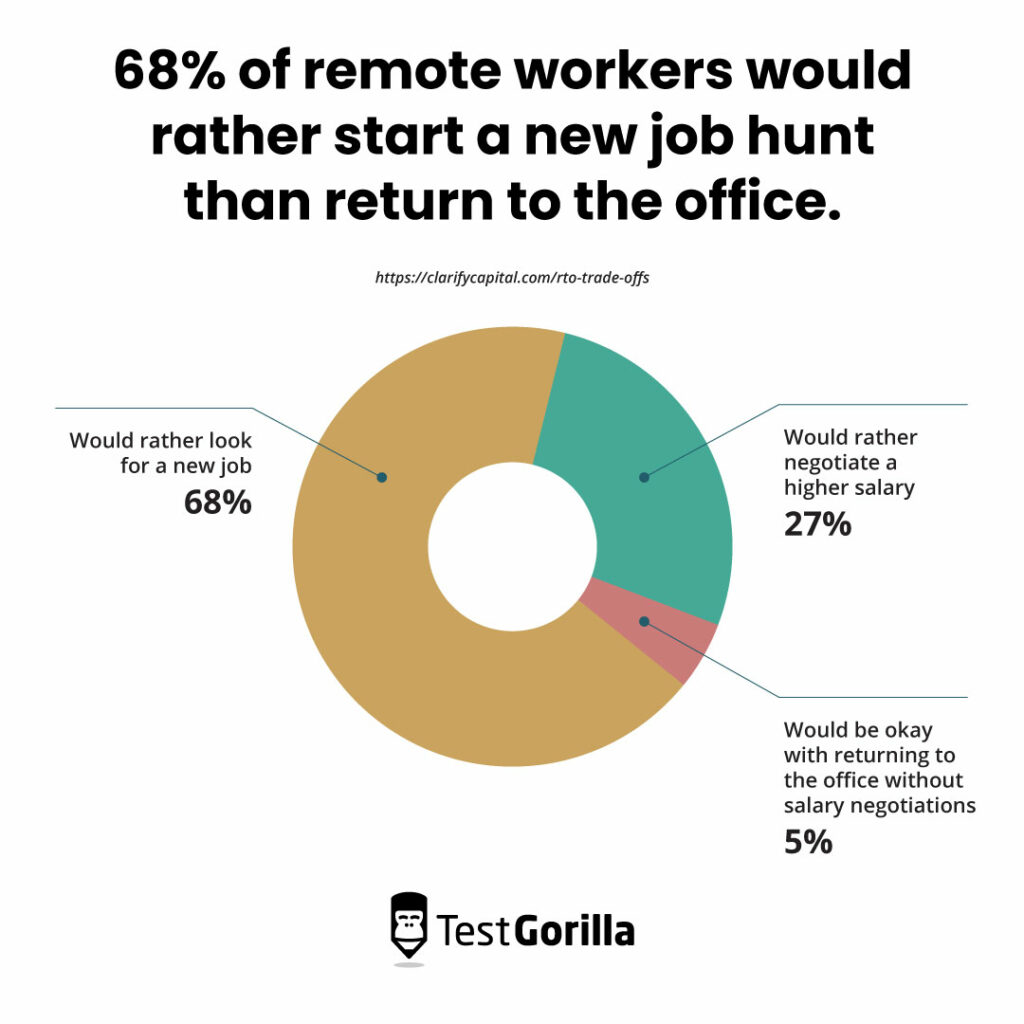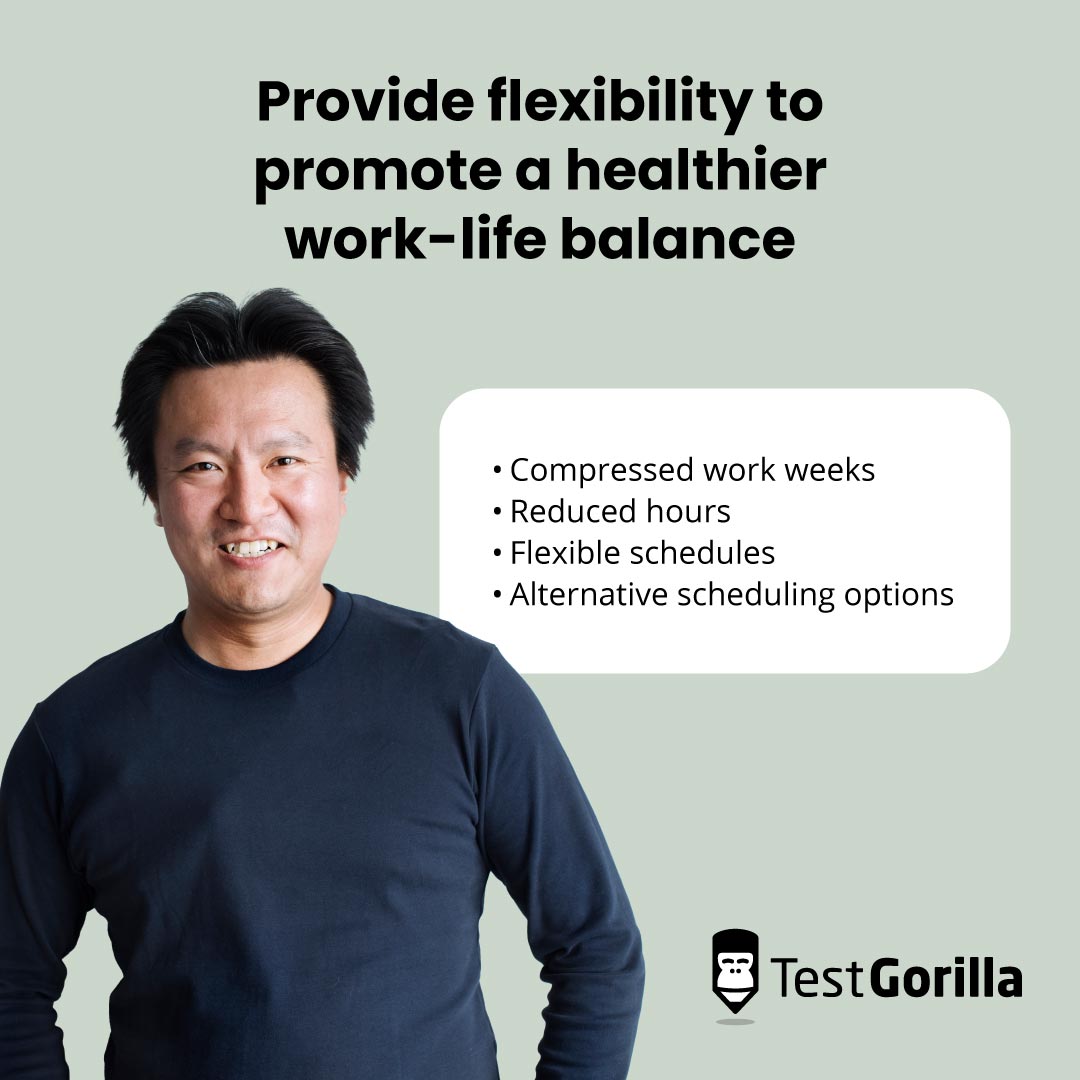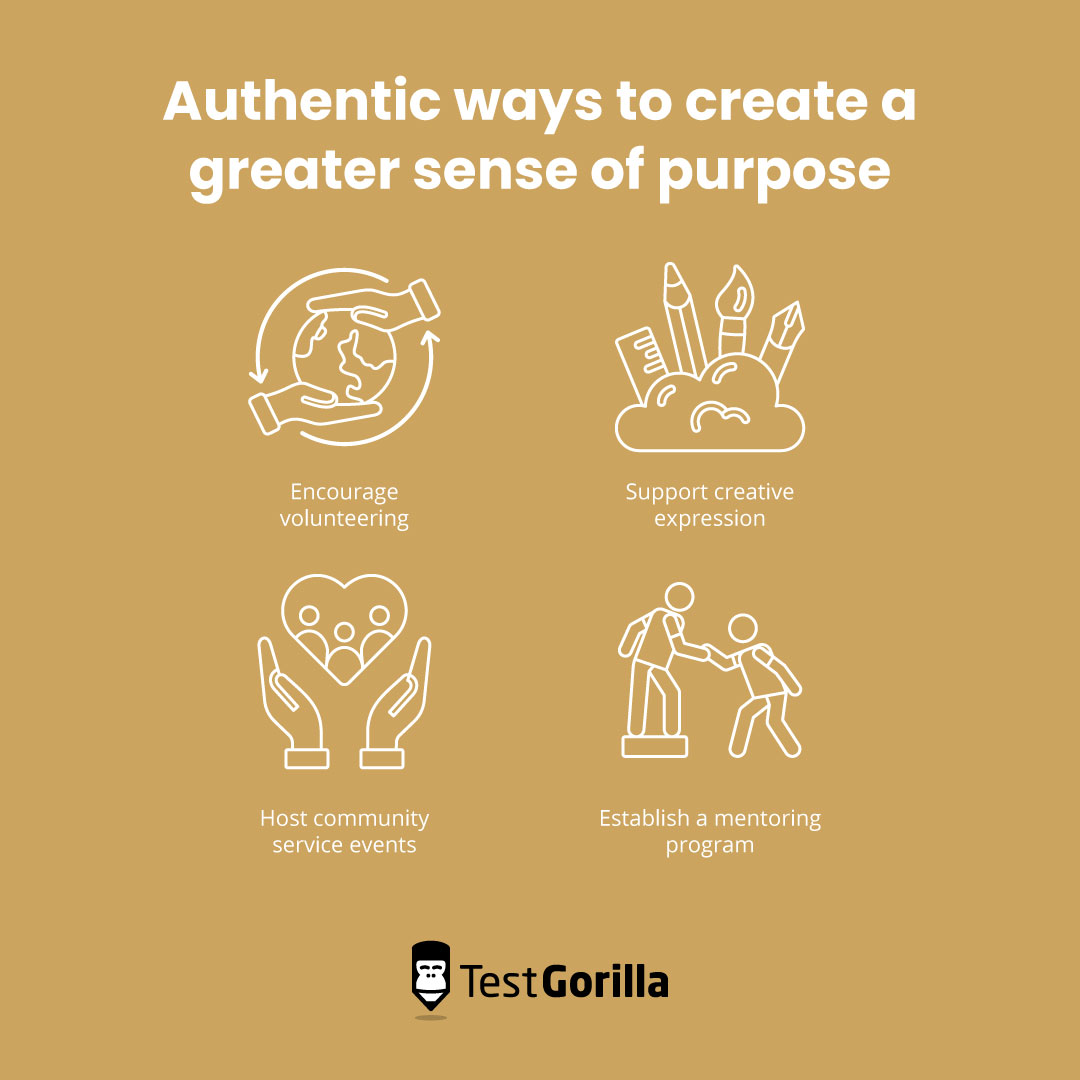Navigating evolving employer-employee dynamics in a post-pandemic world
It’s been a rough few years for human resources professionals. They’ve had to be extraordinarily flexible and quick-thinking, guiding employees through unfamiliar challenges and unconventional workplace arrangements that even a creative genius like Steve Jobs would never have imagined.
And it doesn’t end there.
At the same time, they’ve had to contend with the increasingly tough job of attracting and retaining top talent in a rapidly-changing job market.
These challenges have led to a seismic shift in employer-employee dynamics, and HR professionals are at the forefront of this transformation. To succeed in this new era of work, they’ll have to adapt to a whole new set of employee demands.
Here’s an honest look at the most significant shifts in employee-employer dynamics since the pandemic (and some strategies to help you adapt).
Table of contents
- Embrace remote work as a long-term reality
- Provide flexibility to promote a healthier work-life balance
- Take real steps to support your employees’ mental health
- Foster a sense of purpose in the workplace
- Develop DEI initiatives that deliver on their promises
- Create opportunities for continuous learning
- Take a skills-based approach to hiring
- It’s a new era in employer-employee dynamics — and that’s a good thing!
Embrace remote work as a long-term reality
Despite some big company names trying to force a return to the office, remote work is here to stay. Employees aren’t backing down on this requirement either – according to a recent study, 68% of remote workers would rather start a new job hunt than return to the office.
Employees have spoken, and remote work should no longer be treated as a temporary solution. Instead, look at it as an opportunity to unlock the potential of a broader, more diverse talent pool.
Don’t restrict your hiring to a specific geographic region – spread your net wide and recruit the best candidates from all corners of the world. Try posting job listings on remote job boards like WeWorkRemotely and connecting with talent on social media. These tactics allow you to find candidates with unique skills and experiences.
It’s also an ideal time to evaluate your remote work best practices and policies. If you never got around to creating official work-from-home policies, now’s the time to do it.
Focus on creating equitable guidelines for everyone – your remote workers should have the same opportunities for career development, training, and promotions as their in-office counterparts. You should also ensure that your remote employees are getting a fair deal regarding pay, benefits, and resources.
Provide flexibility to promote a healthier work-life balance
Flexible working arrangements are the yin to remote work’s yang. The pandemic proved without a doubt that most desk jobs could be done remotely and on a flexible schedule.
Employees are responding to this realization by asking for more flexibility, and it’s a reasonable request. It lets them better manage their personal lives, including having more time to care for their kids or parents without sacrificing their work commitments.
Flexibility has been shown to positively affect job satisfaction, which benefits your company by boosting job performance. It’s actually pretty easy to give your people more free time if you’re willing to get creative with your approach.
Here are just a few examples of different work schedules that could work for your teams:
Compressed work weeks, which involve working longer hours in fewer days to give employees an extra day off.
Reduced hours like 32-hour work weeks where employees work four 8-hour days but get paid for 40 hours.
Flexible schedules let employees decide when they start and finish work, often centered around core hours.
Alternative scheduling options like staggered start and end times or split shifts.
Take real steps to support your employees’ mental health
Giving employees a link to your employee assistance program (EAP) during onboarding and calling it a day isn’t going to cut it anymore. The pandemic has profoundly impacted everyone’s mental health, leading many people to experience depression, anxiety, or post-traumatic stress.
Your employees need tangible options for mental health support, which means committing substantial time and resources to improving their mental well-being. Providing resources like wellness programs, access to counseling services through your EAP, and on or off-site fitness classes are a good start, but you need to take it further.
Offering mental health days gives your people an opportunity to take time off work to decompress. It’s a small gesture that can make a significant difference in preventing burnout and reducing stress. It can also improve productivity and engagement when they return to work. You probably won’t have to twist any arms to get employee support for this type of initiative – one study found that 39% of employees want the flexibility to take a day off for self-care.
Workplace autonomy is a topic that isn’t discussed much in the context of well-being, but it can play a substantial role in boosting it. Research shows an increased sense of autonomy at work can improve psychological well-being. Giving your employees more freedom and independence to complete tasks without being micromanaged will make them more satisfied with their job.
Don’t underestimate the impact of open communication and feedback in creating a healthy work environment for your employees. Encourage managers to check in regularly with their team members and actively listen to employee concerns and suggestions. These gestures create a sense of community and support and demonstrate that your organization truly cares about its employees.
Foster a sense of purpose in the workplace
Job seekers today are looking for more than just a paycheck – they want to be part of a company that values the same things they do. The pandemic caused employees to reflect on their priorities and contemplate whether their current paths are fulfilling. They also started looking at new job paths that better align with their passions and purpose. One Gartner study found that over 50% of employees have questioned the purpose of their day-to-day job.
A sense of purpose is becoming increasingly important in today’s workforce, particularly among Millennials and Gen Z, who are willing to reject jobs and assignments that don’t align with their values. By acknowledging and addressing the importance of purpose in the workplace, you can effectively attract and retain top talent while fostering a more profound sense of meaning and engagement among your employees.
Reciting your company’s mission statement ad nauseam isn’t going to make a dent in your company culture. Here are several authentic ways to create a greater sense of purpose:
Encourage volunteering: Offer employees paid time off to volunteer for a cause or charity of their choice.
Support creative expression: Provide opportunities for employees to express their creativity through a company-sponsored program or during designated work hours.
Host community service events: Organize non-political events that involve giving back to the community, like group volunteering with Habitat for Humanity or donating time to a local non-profit animal shelter.
Establish a mentoring program: Pair employees with mentors within your company or industry to help them upskill and take an active role in their career development.
Develop DEI initiatives that deliver on their promises
It’s a given that promoting diversity, equity, and inclusion (DEI) is a critical aspect of creating a healthy workplace culture. Unfortunately, not all DEI programs are created equal. Some companies try to wing it with surface-level programs that end up doing more harm than good.
Let’s be honest – if you’re not addressing the root causes of inequality, you’re not doing anything to fix the problem. It’s time to start taking action to build a truly diverse and inclusive workplace.
If you want a truly diverse workplace, you need to take a holistic approach. To ensure you’re treating everyone equally, you need to examine every aspect of the employee experience, from recruitment to hiring to promotions and compensation. Start by thoroughly auditing your company’s recruitment and hiring process, including looking at job descriptions and interview questions for any potentially discriminatory language or assumptions.
Genuine DEI initiatives require ongoing education and training, not just a one-time workshop or seminar. Invest in regular training for everyone (including your own teams) to promote awareness and understanding of diversity and inclusion issues.
Actively seek out and listen to feedback from underrepresented employees and use that feedback to inform policies and practices. Consider setting up focus groups or employee resource groups (ERGs) where employees can voice their opinions and experiences. You can also conduct anonymous surveys to gather feedback on a larger scale.
Employees need to feel safe and supported when sharing their thoughts, so consider partnering with a third-party organization to facilitate the feedback process. Once you’ve gathered feedback, be transparent about the steps you’ll take to address any issues or concerns raised, and regularly communicate progress updates to everyone in your organization (and we mean everyone.)
Create opportunities for continuous learning
People want to work for organizations that offer them opportunities to learn and grow professionally and personally. A Gallup study found that 65% of workers think employer-provided upskilling matters a lot when evaluating potential jobs, and 48% say they would switch jobs if offered training opportunities.
To meet this demand for employer-provided upskilling, create a culture of continuous learning and development. Offer regular training and upskilling opportunities, mentoring programs, and other forms of support to help employees stay engaged and motivated.
You might, for example, offer opportunities for employees to attend conferences, workshops, or other events relevant to their job and interests. In addition to acquiring new knowledge and skills, they’ll also get the chance to expand their professional network.
You could also encourage employees to share their expertise with others inside your company by organizing skill-sharing sessions. These workshops benefit employees and give the presenter a chance to practice public speaking.
Beyond offering learning opportunities, you should provide recognition and rewards for those who take the initiative to develop new skills. A low-lift way to get the ball rolling on this is to highlight your employees’ accomplishments in company-wide emails or during all-hands meetings.
Take a skills-based approach to hiring
The traditional, resume-based approach to hiring has become obsolete. ATS software can be pretty ruthless, weeding out people based on arbitrary factors like education or years of experience. Even interviews can be hit or miss, with questions that only sometimes get to the heart of what the job requires.
It’s time to start looking beyond the surface-level stuff and focus on skills instead.
When you make skills and abilities the focus of your hiring process, you prioritize each candidate’s unique talents and put them in positions where they can truly shine and be happy.
Our report on The State of Skills-Based Hiring 2022 found that over 90% of companies using this method saw a reduction in cost and time-to-hire, along with a increases in retention and diversity.
Skills-based hiring isn’t just about finding the best candidates. It’s about retaining them, too. When matched to roles that align with their skills and interests, employees are more likely to feel fulfilled and engaged in their work. This harmony increases job satisfaction and retention, which is crucial for any company’s success.
Our research on skills-based hiring revealed that:
Over 72% of employees hired using skills-based hiring were either happy or very happy in their current role, compared to nearly 63% of employees hired through other methods.
Only 3.2% of employees recruited using skills-based hiring plans will leave their jobs within the next year, compared to 7.3% of employees recruited without skills-based hiring practices.
So why not take action and start prioritizing skills in your hiring process? Your employees – and your bottom line – will thank you for it. If you need help getting started, you can check out our guide to setting up skills-based hiring practices in your organization.
It’s a new era in employer-employee dynamics — and that’s a good thing!
The companies that succeed in this world of remote work and employees’ shifting relationship with work will be those who embrace flexibility, diversity and growth in their workforce. Teams that reflect a diversity of experiences, interests and skills are going to have the advantage over static companies that cling to how things were.
Related posts
You've scrolled this far
Why not try TestGorilla for free, and see what happens when you put skills first.
Latest posts
The best advice on pre-employment testing, in your inbox.
No spam. Unsubscribe at any time.

Hire the best. No bias. No stress.
Our screening tests identify the best candidates and make your hiring decisions faster, easier, and bias-free.
Free resources
This checklist covers key features you should look for when choosing a skills testing platform
This resource will help you develop an onboarding checklist for new hires.
How to assess your candidates' attention to detail.
Learn how to get human resources certified through HRCI or SHRM.
Learn how you can improve the level of talent at your company.
Learn how CapitalT reduced hiring bias with online skills assessments.
Learn how to make the resume process more efficient and more effective.
Improve your hiring strategy with these 7 critical recruitment metrics.
Learn how Sukhi decreased time spent reviewing resumes by 83%!
Hire more efficiently with these hacks that 99% of recruiters aren't using.
Make a business case for diversity and inclusion initiatives with this data.




















